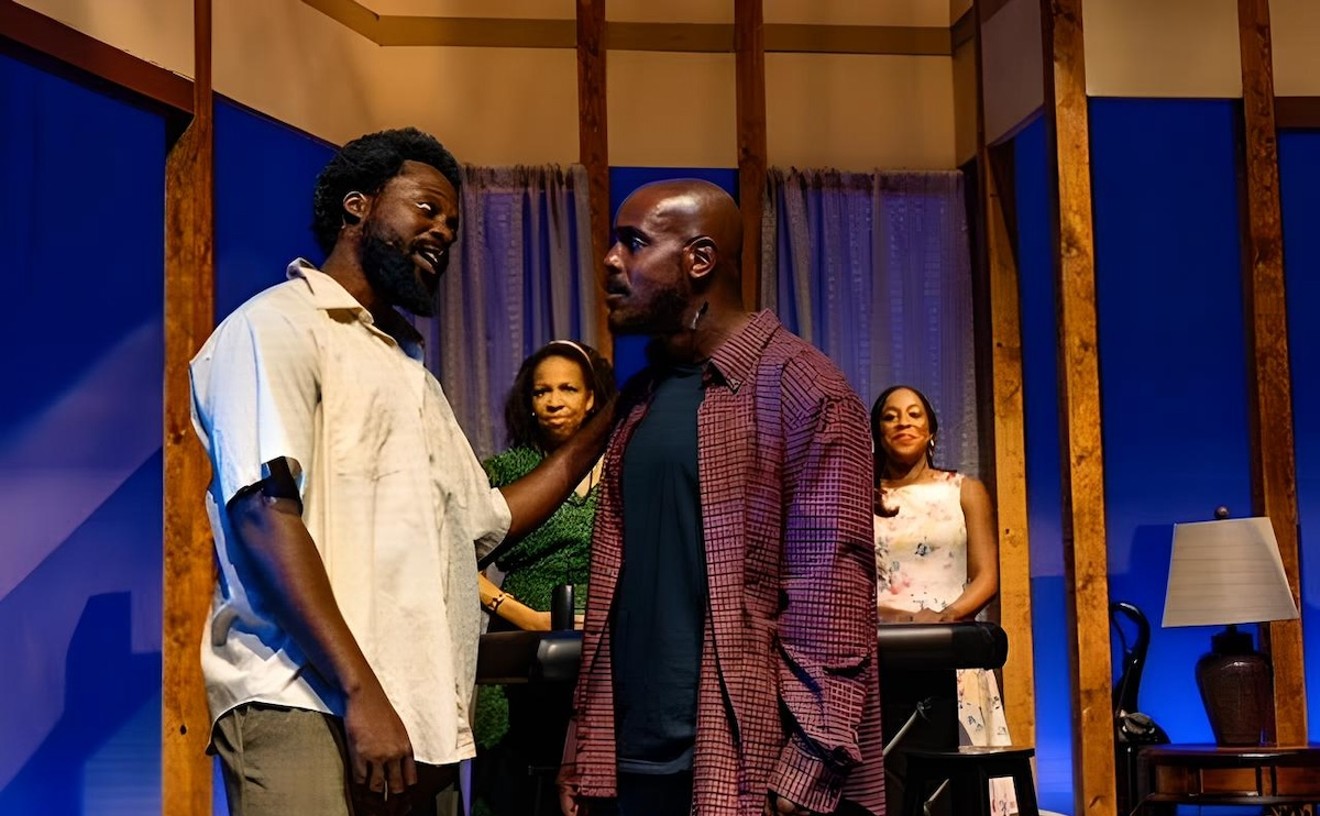Anton Solomoukha once had his apple cheeks kissed by Soviet Premier Nikita Khrushchev, who was visiting the boy's parents' home in the Ukraine.
The precocious lad, who had won second place in a drawing contest while only six years old, was the son of educators who both worked for the government.
Solomoukha later entered the Faculty for the Restoration of Icons in the Kiev School of Fine Art and was awarded a diploma in 1973 as a "monumentalist" painter. He soon came to the attention of political censors and was several times summoned to appear before the KGB for his dissident expression.
He consequently emigrated to Paris with his wife in 1978 and has lived there ever since.
Turning from the brush and easel to the camera, the artist has more recently become known for sweeping, operatic photographs based on famous canvases by Caravaggio, Ingres, Botticelli, Delacroix, and other masters.
Solomoukha's stunning series of surreal images titled "Little Red Riding Hood Visits the Grand Louvre" and "Little Red Riding Hood Visits Chernobyl" will make their stateside debut as part of the Second Saturday Wynwood gallery crawl this Saturday beginning at 7 p.m.
The works are on view at the freshly minted Black Square Gallery, which is operated by Russian dealer Anna Milashevych and her Venezuelan partner, Ron Kritzler. Their gallery is named after the sooty opus of Kazimir Malevich, an artist and theorist, that became an early symbol of abstract and conceptual art.
The gallery's stable will feature mostly Russian and Eastern European contemporary work. It's not just leading edge, it's bleeding edge.
At first blush, Solomoukha's pictures appear more paintings than photographs. He typically arranges his cast of characters — men, women, and children — in elaborately staged settings based on drawings he first executes using Photoshop. He then photographs his clothed and nude models against a tarry black background to diffuse the light in erotically and psychologically freighted scenes. The result is both seductive and discomfiting.
In these arresting works, the artist, who was born during Joseph Stalin's reign, borrows the dictator's penchant for historical revisionism and adds fairytale figure Little Red Riding Hood to well-known masterpieces, which alters their meanings. The little girl gets to play dress up, revel in erotic fantasies, and engage in stinging cultural critiques.
In a tribute to Diego Velázquez's Las Meninas, half-naked go-go girls lounge in the background while a leather-clad biker tinkers with his Harley and a business dude strikes a pose sporting an Indian chief's war bonnet.
In another work from the Grand Louvre series, which skewers communism and gives a nod to painter R. B. Kitaj, Solomoukha places a woman clad only in a red scarf at the center of the picture. A greyhound and a pistol are near her tootsies. You can't tell if she is supposed to represent Red Riding Hood stripped of her innocence, but there's a hint in in the background. Pictures of Vladimir Lenin and women in bondage compete for the peepers while a mook in his skivvies cavorts in a feathered headdress.
The artist's pictures referencing Chernobyl are equally corrosive and dripping with irony.
One photo based on Tintoretto's "Mercury and the Three Graces" depicts three nude women trussed like Thanksgiving turkeys and suspended over a motorcycle in an empty swimming pool. The scene looks like something lifted straight from a porn mag devoted to Kinbaku, the art of Japanese bondage.
If you only get the chance to visit one gallery this Saturday, make this the one. Solomoukha's dreamscape and symbolic lexicon boasts a scintillating depravity of the first order. It's both adroit and cunning in its execution. Take a gander at his stuff and you'll quickly understand why the KGB goons dragged this big, bad wolf to their Lubyanka headquarters.
Upwind, at the Center for Visual Communications, a sprawling exhibit showcasing a homegrown movement calling itself The Miami School puts the 305 front and center in contemporary painting.
The show features the work of Darby Bannard, who was one of the originators of minimalism in the late 1950s with Frank Stella. He also pioneered color-field painting with Jules Olitski and Kenneth Noland in the 1960s. The graybeard master, known for truck-sized canvases coated with atmospheric fields of richly colored gels and paints applied with push brooms, has headed the University of Miami Department of Art and Art History for the past two decades.
During his tenure, he has mentored a generation of young artists who are generating the new movement in abstract painting. "It's very exciting to present an exhibition that celebrates the emergence of a new movement in art and at the same time the serious work of painters in the Miami community," says Barry Fellman, the CVC's director. "The artists in the show demonstrate that Miami is a central participant in the current discourse of painting in America."
Visitors can expect work that is as vibrant, bold, and infused with heat as our city itself, adds Fellman. "Abstract Miami" also includes work by Andy Gambrell, George Bethea, Sean Smith, Kathleen Staples, Kerry Ware, and David Marsh. Works on display will range from the pooled colors of Bethea to the lyrical geometry of Gambrell to Ware's scrubbed surfaces and subtle shift of hues.
"The responses have already hit a chord," says Fellman. "We are extending the exhibit through Basel now — even before it has opened — because of the expectations currently surrounding it. We hope this will highlight to the international art world the coming of age of Miami and that the visual arts here are worthy of attention year-round and not just one week in December featuring art from other places."










